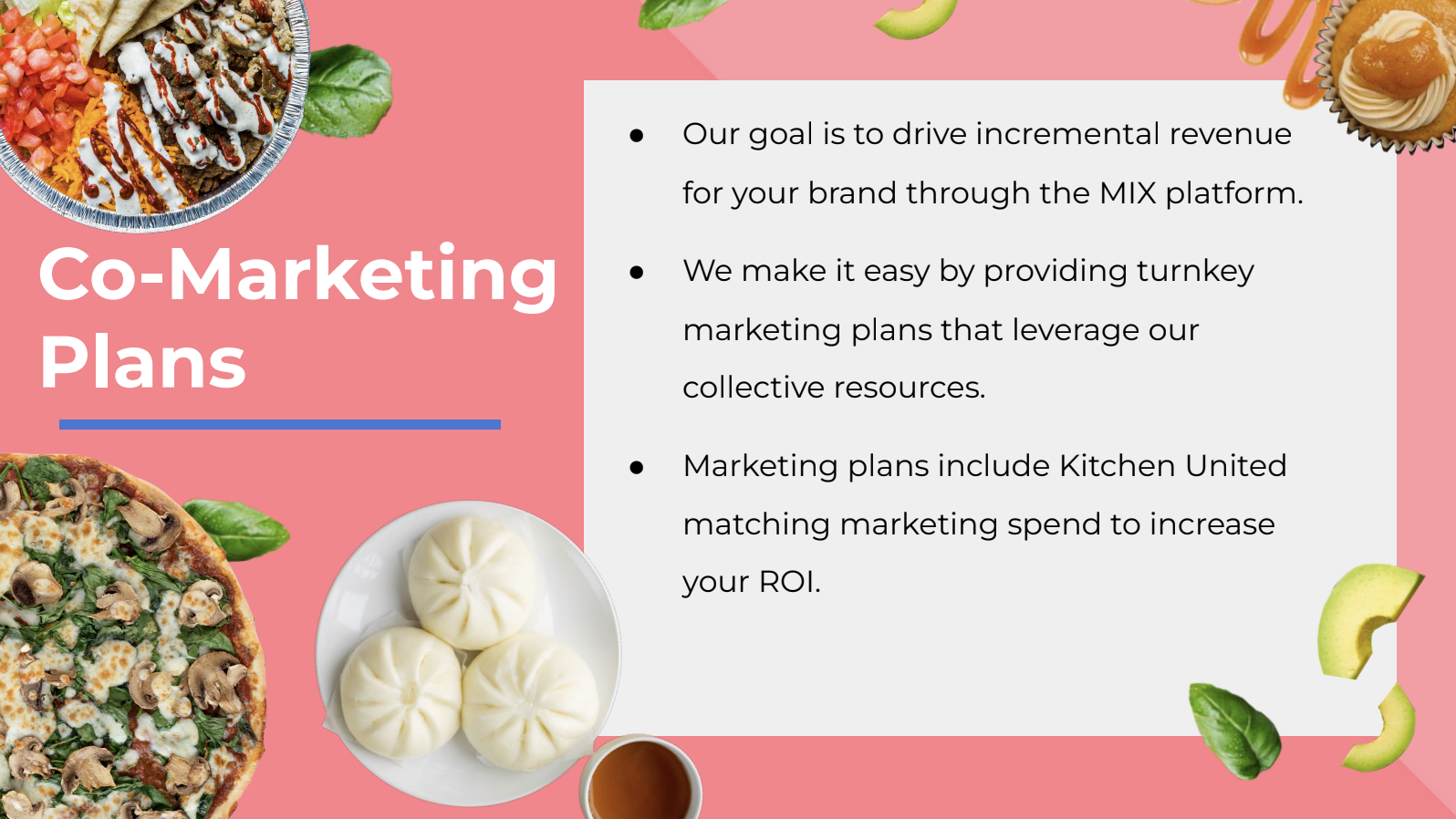How I Brought Client Marketing In-House to Support Rapid National Expansion
Case Study: Kitchen United
Scenario
In 2021, after a static expansion period due to the Covid-19 Pandemic, the leadership team for ghost kitchen company Kitchen United announced an aggressive expansion plan – 15 new ghost kitchen locations open in 6 months. In addition to streamlining real estate, construction, operations, and technology efforts, for the initiative to be successful and unlock future growth, the restaurants inside each location would need to have access to individual success.
Challenge
Due to the new, lightweight operating model of a ghost kitchen, restaurants large and small were lacking access to proven virtual restaurant marketing strategies, dedicated hyper-local marketing resources, and substantial marketing budget.
#1 Bringing client marketing in-house was an opportunity to consolidate resources and directly influence success
As the partners with proven virtual restaurant marketing strategies, dedicated hyper-local resources, and our own skin in the game, I saw the opportunity to bring restaurant partner marketing in-house by building a co-marketing product. The goal of the co-marketing product would be to give restaurant partners a simple way to invest in marketing our location and give Kitchen United the ability to ensure restaurant marketing activity, increase the overall marketing budget, and gain visibility into new learnings and success metrics.
#2 A collaborative approach secured initial buy-in from external and internal stakeholders
The scope of the Co-Marketing pilot program was shaped in partnership with restaurant client marketing teams, internal stakeholders from Finance, Operations, Customer Success, Sales, and executive leadership ensuring their initial buy-in. I also worked with our internal Marketing team to understand the workload implications of the new program and secured an outside digital agency to fill gaps and elevate potential performance.
#3 After validating the pitch, the Co-Marketing Program was integrated into the existing sales and upselling process
To secure pilot restaurant partners for the Co-Marketing Program, I pitched the CEO, CMO, or owner of target companies and worked through each question and point of friction until I had secured six pilot partners at an initial three locations. To scale, I translated this custom approach into SOPs, customizable pitch decks, and training sessions for the Sales and Customer Success teams to integrate into their existing sales and upselling processes.
#4 A strong operational infrastructure enabled our small in-house team to manage 20+ campaigns across locations simultaneously
To maximize the output of our small in-house team, I built an operational infrastructure of support including onboarding and campaign workflow management tools in Asana, data analytics reporting dashboards in Google Data Studio, and led the ongoing cadence of internal and external meetings.
#5 B2C and B2B content became interlinked as Co-Marketing campaigns proved to be valuable sales material
Within the Co-Marketing campaigns, we leveraged influencer partnerships to create compelling hyper-local content such as the “Secret Location” TikTok video which resulted in 100k views and a 20% increase in sales week over week for an underperforming national brand. We were also able to use collective learnings to produce case studies and webinars for the Sales team to use to sell future locations.
Results
Once up and running, the Co-Marketing Program proved to be pivotal to all marketing efforts as it increased the annual marketing budget by $100k in the first year, achieved a higher average ROAS than owned campaigns, and achieved individual results for key clients. Individual results include increasing sales by 59% MOM for a national brand new to virtual kitchens, launching paid social media campaigns through a popular regional brand’s social channels resulting in a $9 ROAS, and increasing sales by 53% MOM for a regional brand new to the market with a $3 ROAS.






